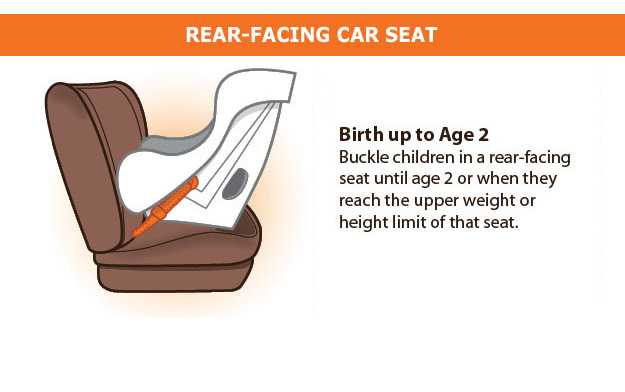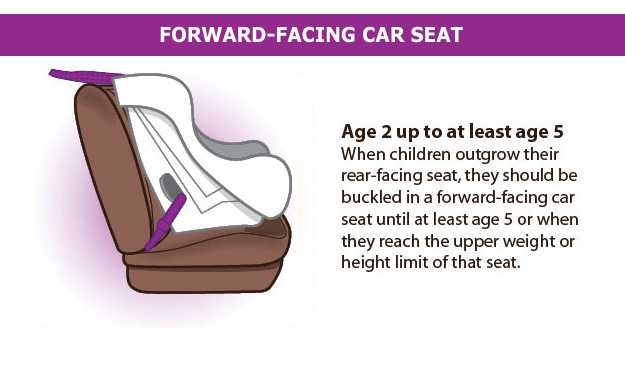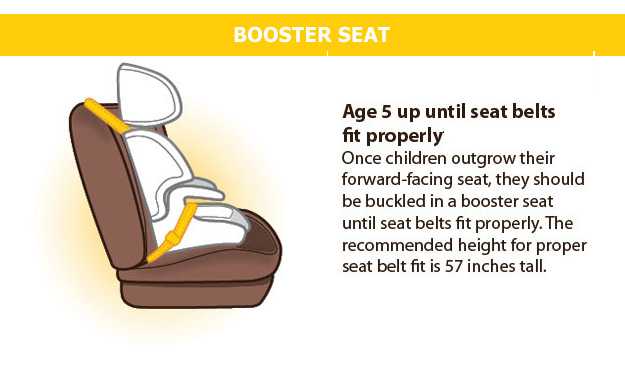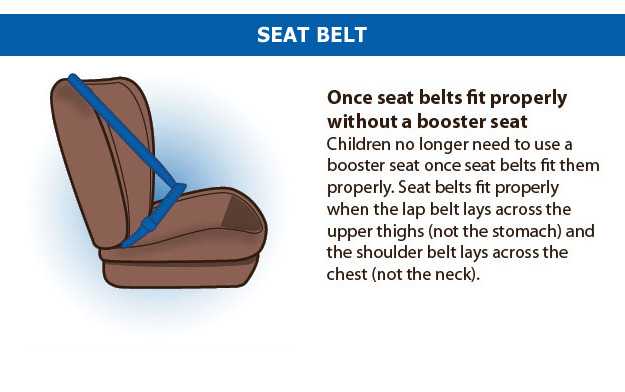Prevention
Prevention
What Can I do to Help Prevent Traumatic Brain Injury?
There are many ways to reduce the chances of sustaining a traumatic brain injury, including:
- Buckling your child in the car using a child safety seat, booster seat, or seat belt (according to the child's height, weight, and age).
Know the Stages
- Birth Up to Age 2
- Age 2 Up to at Least Age 5
- Age 5 Up to at Least Age 9
- Once Seat Belts Fit Properly
- Remember
Birth Up to Age 2

Rear-facing car seat
For the best possible protection, infants and children should be kept in a rear-facing car seat, in the back seat buckled with the seat’s harness, until they reach the upper weight or height limits of their particular seat. Check the seat’s owner’s manual for weight and height limits.
Age 2 Up to at Least Age 5

Forward-facing car seat
When children outgrow their rear-facing seats they should ride in forward-facing car seats, in the back seat buckled with the seat’s harness, until they reach the upper weight or height limit of their particular seat. Check the seat’s owner’s manual for weight and height limits.
Age 5 Up to at Least Age 9

Booster seat
Once children outgrow their forward-facing seats (by reaching the upper height and weight limits of their seat), they should ride in belt positioning booster seats. Remember to keep children in the back seat for the best possible protection.
Once Seat Belts Fit Properly

Children should use booster seats until adult seat belts fit them properly. Seat belts fit properly when the lap belt lays across the upper thighs (not the stomach) and the shoulder belt fits across the chest (not the neck). The recommended height for proper seat belt fit is 57 inches tall. For the best possible protection keep children in the back seat and use lap-and-shoulder belts.
Remember
All children aged 12 and under should ride in the back seat. Airbags can kill young children riding in the front seat. Never place a rear-facing car seat in the front seat or in front of an air bag.
- Wearing a seat belt every time you drive or ride in a motor vehicle.
- Never driving while under the influence of alcohol or drugs.
- Wearing a helmet and making sure your children wear helmets when:
- Riding a bike, motorcycle, snowmobile, scooter, or all-terrain vehicle;
- Playing a contact sport, such as football, ice hockey, or boxing;
- Using in-line skates or riding a skateboard;
- Batting and running bases in baseball or softball;
- Riding a horse; or
- Skiing or snowboarding.
- Making living areas safer for seniors, by:
- Removing tripping hazards such as throw rugs and clutter in walkways;
- Using nonslip mats in the bathtub and on shower floors; Installing grab bars next to the toilet and in the tub or shower;
- Installing handrails on both sides of stairways;
- Improving lighting throughout the home; and
- Maintaining a regular physical activity program, if your doctor agrees, to improve lower body strength and balance.1,2,3
- Making living areas safer for children, by:
- Installing window guards to keep young children from falling out of open windows; and
- Using safety gates at the top and bottom of stairs when young children are around.
- Making sure the surface on your child's playground is made of shock-absorbing material, such as hardwood mulch or sand.4
Additional Pevention Resources
References
- Judge JO, Lindsey C, Underwood M, Winsemius D. Balance improvements in older women: effects of exercise training. Physical Therapy 1993;73(4):254–265.
- Lord SR, Caplan GA, Ward JA. Balance, reaction time, and muscle strength in exercising older women: a pilot study. Archives of Physical and Medical Rehabilitation 1993;74(8):837–839.
- Campbell AJ, Robertson MC, Gardner MM, Norton RN, Buchner DM. Falls prevention over 2 years: a randomized controlled trial in women 80 years and older. Age and Aging 1999;28:513–518.
- Mack MG, Sacks JJ, Thompson D. Testing the impact attenuation of loose fill playground surfaces. Injury Prevention 2000;6:141–144.
- Page last reviewed: January 22, 2016
- Page last updated: January 22, 2016
- Content source:
- Centers for Disease Control and Prevention,
- National Center for Injury Prevention and Control,
- Division of Unintentional Injury Prevention


 ShareCompartir
ShareCompartir
